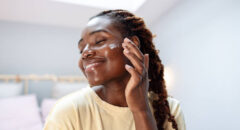 At least 40 million Americans each year suffer from chronic, long-term sleep
At least 40 million Americans each year suffer from chronic, long-term sleep
disorders each year, and an additional 20 million experience occasional sleeping
problems. These disorders and the resulting sleep deprivation interfere with
work, driving, and social activities. They also account for an estimated $16
billion in medical costs each year, while the indirect costs due to lost
productivity and other factors are probably much greater. Doctors have described
more than 70 sleep disorders, most of which can be managed effectively once they
are correctly diagnosed. The most common sleep disorders include insomnia, sleep
apnea, restless legs syndrome, and narcolepsy.
Insomnia
Almost everyone occasionally suffers from short-term insomnia. This problem
can result from stress, jet lag, diet, or many other factors. Insomnia almost
always affects job performance and well-being the next day. About 60 million
Americans a year have insomnia frequently or for extended periods of time, which
leads to even more serious sleep deficits. Insomnia tends to increase with age
and affects about 40 percent of women and 30 percent of men. It is often the
major disabling symptom of an underlying medical disorder.
For short-term insomnia, doctors may prescribe sleeping pills. Most sleeping
pills stop working after several weeks of nightly use, however, and long-term
use can actually interfere with good sleep. Mild insomnia often can be prevented
or cured by practicing good sleep habits. For more serious cases of insomnia,
researchers are experimenting with light therapy and other ways to alter
circadian cycles.
Sleep Apnea
Sleep apnea is a disorder of interrupted breathing during sleep. It usually
occurs in association with fat buildup or loss of muscle tone with aging. These
changes allow the windpipe to collapse during breathing when muscles relax
during sleep. This problem, called obstructive sleep apnea, is usually
associated with loud snoring (though not everyone who snores has this disorder).
Sleep apnea also can occur if the neurons that control breathing malfunction
during sleep.
During an episode of obstructive apnea, the person’s effort to inhale air
creates suction that collapses the windpipe. This blocks the air flow for 10
seconds to a minute while the sleeping person struggles to breathe. When the
person’s blood oxygen level falls, the brain responds by awakening the person
enough to tighten the upper airway muscles and open the windpipe. The person may
snort or gasp, then resume snoring. This cycle may be repeated hundreds of times
a night. The frequent awakenings that sleep apnea patients experience leave them
continually sleepy and may lead to personality changes such as irritability or
depression. Sleep apnea also deprives the person of oxygen, which can lead to
morning headaches, a loss of interest in sex, or a decline in mental
functioning. It also is linked to high blood pressure, irregular heartbeats, and
an increased risk of heart attacks and stroke. Patients with severe, untreated
sleep apnea are two to three times more likely to have automobile accidents than
the general population. In some high-risk individuals, sleep apnea may even lead
to sudden death from respiratory arrest during sleep.
An estimated 18 million Americans have sleep apnea. However, few of them have
had the problem diagnosed. Patients with the typical features of sleep apnea,
such as loud snoring, obesity, and excessive daytime sleepiness, should be
referred to a specialized sleep center that can perform a test called
polysomnography. This test records the patient’s brain waves, heartbeat, and
breathing during an entire night. If sleep apnea is diagnosed, several
treatments are available. Mild sleep apnea frequently can be overcome through
weight loss or by preventing the person from sleeping on his or her back. Other
people may need special devices or surgery to correct the obstruction. People
with sleep apnea should never take sedatives or sleeping pills, which can
prevent them from awakening enough to breathe.
Restless Legs Syndrome
Restless legs syndrome (RLS), a familial disorder causing unpleasant
crawling, prickling, or tingling sensations in the legs and feet and an urge to
move them for relief, is emerging as one of the most common sleep disorders,
especially among older people. This disorder, which affects as many as 12
million Americans, leads to constant leg movement during the day and insomnia at
night. Severe RLS is most common in elderly people, though symptoms may develop
at any age. In some cases, it may be linked to other conditions such as anemia,
pregnancy, or diabetes.
Many RLS patients also have a disorder known as periodic limb movement
disorder or PLMD, which causes repetitive jerking movements of the
limbs, especially the legs. These movements occur every 20 to 40 seconds and
cause repeated awakening and severely fragmented sleep. In one study, RLS and
PLMD accounted for a third of the insomnia seen in patients older than age 60.
RLS and PLMD often can be relieved by drugs that affect the neurotransmitter
dopamine, suggesting that dopamine abnormalities underlie these disorders’
symptoms. Learning how these disorders occur may lead to better therapies in the
future.
Narcolepsy
Narcolepsy affects an estimated 250,000 Americans. People with narcolepsy
have frequent “sleep attacks” at various times of the day, even if they have had
a normal amount of night-time sleep. These attacks last from several seconds to
more than 30 minutes. People with narcolepsy also may experience cataplexy (loss
of muscle control during emotional situations), hallucinations, temporary
paralysis when they awaken, and disrupted night-time sleep. These symptoms seem
to be features of REM sleep that appear during waking, which suggests that
narcolepsy is a disorder of sleep regulation. The symptoms of narcolepsy
typically appear during adolescence, though it often takes years to obtain a
correct diagnosis. The disorder (or at least a predisposition to it) is usually
hereditary, but it occasionally is linked to brain damage from a head injury or
neurological disease.
Once narcolepsy is diagnosed, stimulants, antidepressants, or other drugs can
help control the symptoms and prevent the embarrassing and dangerous effects of
falling asleep at improper times. Naps at certain times of the day also may
reduce the excessive daytime sleepiness.
In 1999, a research team working with canine models identified a gene that
causes narcolepsy – breakthrough that brings a cure for this disabling condition
within reach. The gene, hypocretin receptor 2, codes for a protein that allows
brain cells to receive instructions from other cells. The defective versions of
the gene encode proteins that cannot recognize these messages, perhaps cutting
the cells off from messages that promote wakefulness. The researchers know that
the same gene exists in humans, and they are currently searching for defective
versions in people with narcolepsy.








